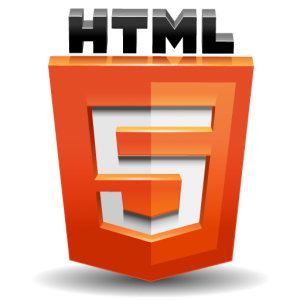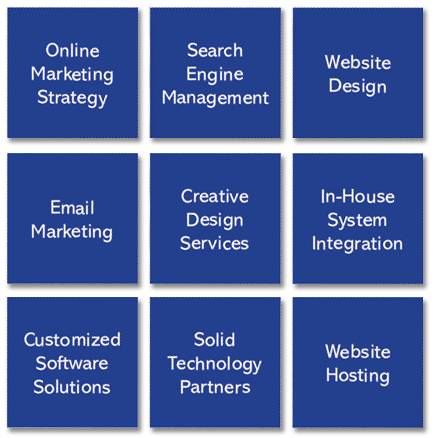
You’re a business leader and marketer. You have been for years now.You know how to appeal to your persona, you know how to create the perfect voice, and you know how to drive sales with your incredible content.
You have read countless articles on how-to create the most impacting and powerful content
As fellow marketers, we know that there are some things that bear repeating. One such topic is how to use words that will hook, engage, and, dare we even say it, manipulate target consumers.
Buzzwords For Internet Marketing
Buzzwords create a ‘hum’ or a ‘buzz’ in the brain of your consumer.
Buzzwords will literally light up various sections of your brain—for instance, the part of the brain associated with gratification or the expectation of pleasant things will light up when they see a title promising to give them something they want.
“Secret Tips to Perfect Deserts” and “Travel to Your Favorite Romantic GetawayDestination For Free” are examples of headlines that promise a reward for click-through.
Conversely, the part of the brain associated with curiosity or learning will be activated when they see an article with buzzwords promising a ‘how-to’ or indicating that they will be receiving desirable information.
Utilizing our understanding of the human brain and manipulating it is a system called neuromarketing. While we aren’t going to dive deep into that topic here, remember that this theory is the basis of much of the research that has pinpointed our various buzzwords.
What Words To Use?
Some buzzwords have been in use for decades and are the little black dress of your verbiage closet, so to speak. Other trendy buzzwords are more like the hipster hornrims and moustache-bedazzled t-shirts of today.
Additionally, some buzzwords may have been highly effective in recent years, but have lost their edge due to overuse. (We all have the old fallback in our word-closet. But we know better, don’t we?)
Here are a couple of things to keep in mind for your titles and your headlines:
1. Don’t forget to keep your keywords to the left. When it comes to good SEO, our keywords are highly important tools in our SEO arsenal. Thus, we need to remember that keywords are most effective when they are furthest to the left. Be inventive with your title, but don’t forget your basic ‘good SEO’ rules.
2. Don’t forget to explain your topic. While caught up in the throes of creative genius, it can be easy to forget that your audience doesn’t already know what your article is about. Be catchy, but don’t forget that clarity nearly always outweighs being clever.
3. Keep it short. There isn’t much room available for your title when it comes up in the search engine results. Keeping your title pithy and short will help you have a bigger impact on your consumer—and a greater chance of click-through.
4. Keep it simple. Ok, YOU might be a literary scholar that studies antediluvian words for fun in your free time (words like antediluvian, for example…), but you have to remember that not everyone else does as well. The words in your headlines and titles need to be ones that the general public would know. When in doubt, grab someone from your tech team and ask if they know the word. If they say no, drop it and pull out your thesaurus to find something more familiar.
The Marketer’s DIY Guide To Effective Titles
It’s all well and good for us to talk about it and throw some buzzwords at you—but what you actually need is a quick DIY guide to creating quippy titles. So, here are some rules of thumb that are good to file away.
1. Numbers, Numbers, Numbers
Use specific numbers so that the audience knows what to expect. Research has shown that audiences and individuals feel more at ease when they know what’s coming. By giving them a specific number, such as “5 Worst Places To Spend Your Money”, they know that they are able to read a list of the five places, no more, no less.
Larger numbers typically have a broader reach than small numbers. By this we mean that articles stating, “101 Ways to Save The World” is going to travel farther, and more quickly, than an article entitled, “3 Ways You Can Cut Down on Energy.”
The Spark of Curiosity:
Cliffhangers.
Every good writer knows that the way to keep your reader turning page after page, chapter after chapter, and book after book, is by creating unbearable cliffhangers.
“What everyone should know…”
“You’ll never believe…”
You want to engage the part of your consumers brain that recognizes that there is information out there that they don’t know—and that they want to know. This not only engages the learning area of the brain, but also the area that is expecting a pleasant reward.
The Element of Surprise:
In a digital world that basically floats upon the ability to provide constant entertainment, a symptom of this media-addiction is that if it isn’t surprising or eye-catching, your average consumer (especially the millennial generation) are probably going to skip on over it.
Using words like, ‘startling’ ‘shocking’ and phrases that follow the idea of ‘you didn’t know this, but OMG you should!’ are going to be key in catching and keeping the attention of various target audiences.
Be careful with the use of surprise—if your title hints that your article is going to be dishing the latest and greatest gossip regarding thenext Google algorithm update, you’d better deliver. Readers that are disappointed with an article that didn’t live up to their expectations are very rarely going to come back to you for more.
The ‘How-To’ Hook:
Appealing to the ‘how-to’ and DIY crowd, an ever-growing population of consumers, is a tried and true tactic that indicates to your consumer that you, amongst all the other businesses clamoring for their business, actually want to teach them how to solve their own problems. And, of course, we both know that the secret to writing a how-to is to honestly explain to them why DIY is (and almost always) not a truly viable solution for their problems.
Using ‘how-to,’ ‘DIY,’ and ‘learn how’ are excellent hooks to pull in this independent crowd.
The Power of Negatives:
It may surprise you to know that negatives are the new positives. It is speculated that the overuse of words like, ‘best,’ ‘always,’ and their synonyms is the reason that most consumers agree that such words are ‘spammy.’
Instead, create a positive by using a blatant negative:
Never
Worst
Don’t
Avoid
And don’t forget to use all the synonyms of ‘bad’ that your thesaurus can come up with.
Addressing the Audience
We did it in our intro—hey you marketer that wants to get better…Using titles and headlines that directly address your buyer persona and their felt needs are going to have an instant magnetic effect on your consumer.
This personal address creates a feeling of connection with you, the business. It will help to build trust, and activate the parts of the brain associated with communication.
Making It Your Own
The reality is, our content writing friend, that the business or industry you are writing for is going to be somewhat unique with what words are your buzzwords.
While some we’ve suggested are tried and true words that have spanned marketing generations, others just may not jive with your target demographic. And that’s ok. That’s why we’re teaching you how to recognize your own buzzwords. It’ll take time, effort, and lots of paying attention, but understand that the arsenal of articulate, client grabbing words that you’ll collect are well worth it.
Step 1. Start paying greater attention to your titles and headlines. Begin using the new strategies you’ve learned (or been reminded of!).
Step 2. Analyze those posts. How successful were they? How many shares did they receive? Keep track of this. Posts that you notice see a huge increase in social activity, click-throughs, and conversions should especially catch your eye. What words are in that title?
Step 3. Start paying attention to what you gets you to convert. A good source of inspiration is to examine the headlines that pulled you into an article. Keep track of the words that inspired you to convert, and think about the things in
that headline that stood out to you.
Step 4. Build a list of the words that you’ve found to be an effective buzzword. The next time you’re struggling with a title, and need a power-packed headline, you’ll have this list of golden words to refer to—and they will be the special words that you’ve fleshed out as red-hot for your buyer personas.
What are your buzzwords for your industry? What words do you have pinned to your wall for title and headline inspiration? We look forward to assisting you with your strategies when it comes to creating exceptional content and incredible internet marketing campaigns.
Market Your Business With Ease and the eManagerSite
eManagerSite’s marketing features easily allow anyone to promote their business and maximize audience reach with our built-in blog, search engine optimization tools, and email marketing plugin. Email Marketing: Send out email campaigns to customers, employees, and other business owners through our email marketing plugin. Use HTML to design beautiful emails that can then be sent to any number of customers, as many times a month as needed. Include pictures, files, videos, links, and more in every email.
SEO: Search engine optimization used to be difficult — not any more! eManagerSite lays out the best ways to increase SEO by allowing users to change meta tags, edit keywords, and more. Because every eManagerSite website is based on simple and clean HTML and CSS, they will already bring in stronger results than a site built in WordPress, Joomla, etc. Blog: No need to sign up with an outside site to get a blog. Every eManagerSite account has a blog included for free, with access to all the blog management tools a business needs. Posting is as easy as typing on the screen, or copying and pasting from Microsoft Word! You can then add images, files, videos, and links of your choice. Schedule your blog to post now or later, and track its success with our built-in analytics. Categorize blogs by “tagging” them, and automatically allow visitors on your site to sort blogs by date, month, or topic.
eManagerSite CMS, business web builder
Unique Marketing Features:
•Easily editable SEO (keywords, meta tags, & more)
•Free blog with post scheduling, categorization, & file attachments
•Integrated email feature: send mass mailings from your dashboard
•Combined with our CRM tool, target specific audiences and categories
•eManagerSite Analytics can track e-mail opens, blog views, SEO conversions
•Free training available to take advantage of all our marketing features
•Free Trial of our business website builder with no risk or commitment
eManagerSite
Get In Touch
Contact Us
15 Commerce Drive,
Cromwell, CT
1-800-418-2358
 Wondering how to find a brand for your business? All you need is take some time to think about the overall purpose of your business.
Wondering how to find a brand for your business? All you need is take some time to think about the overall purpose of your business.
